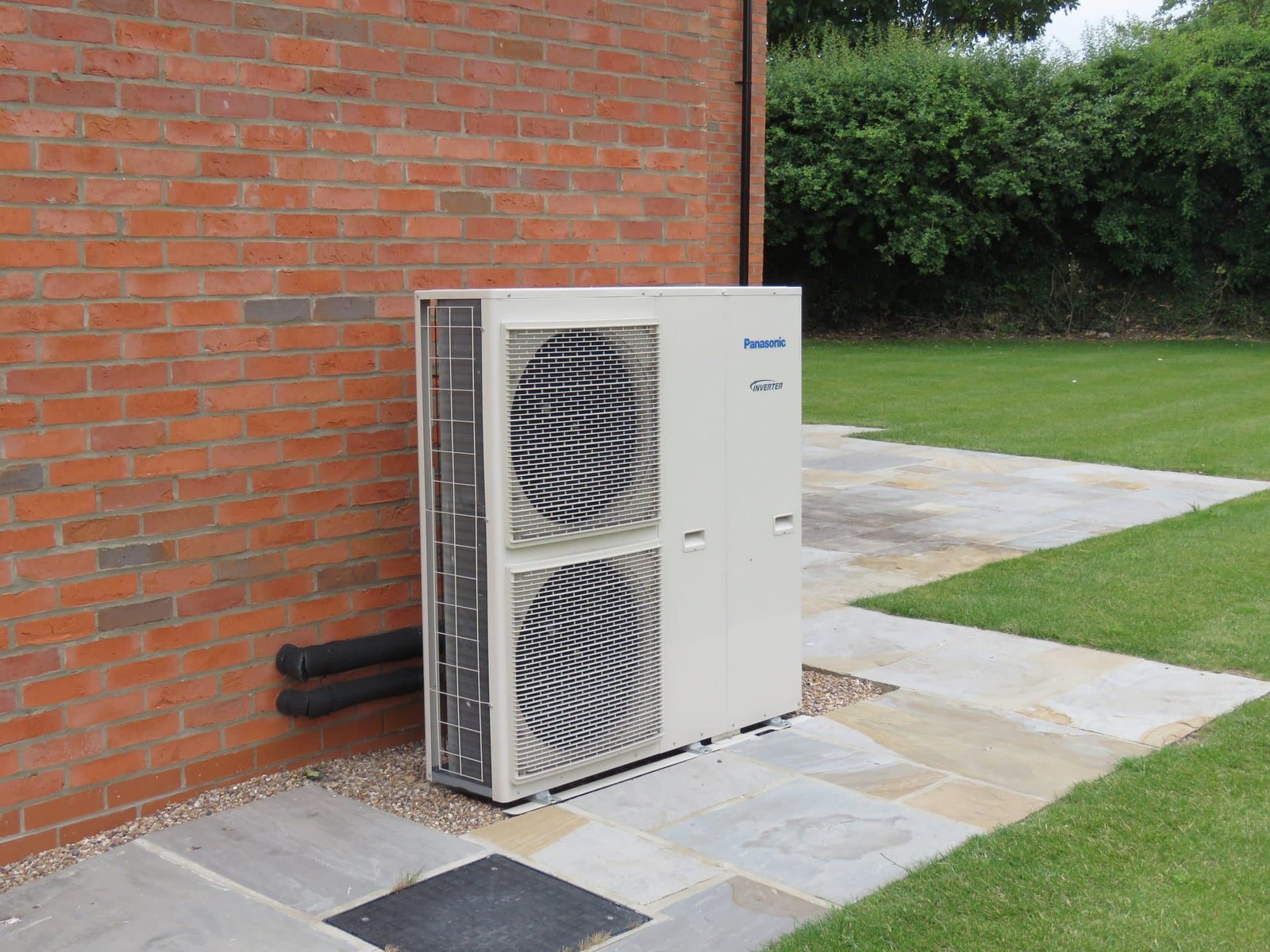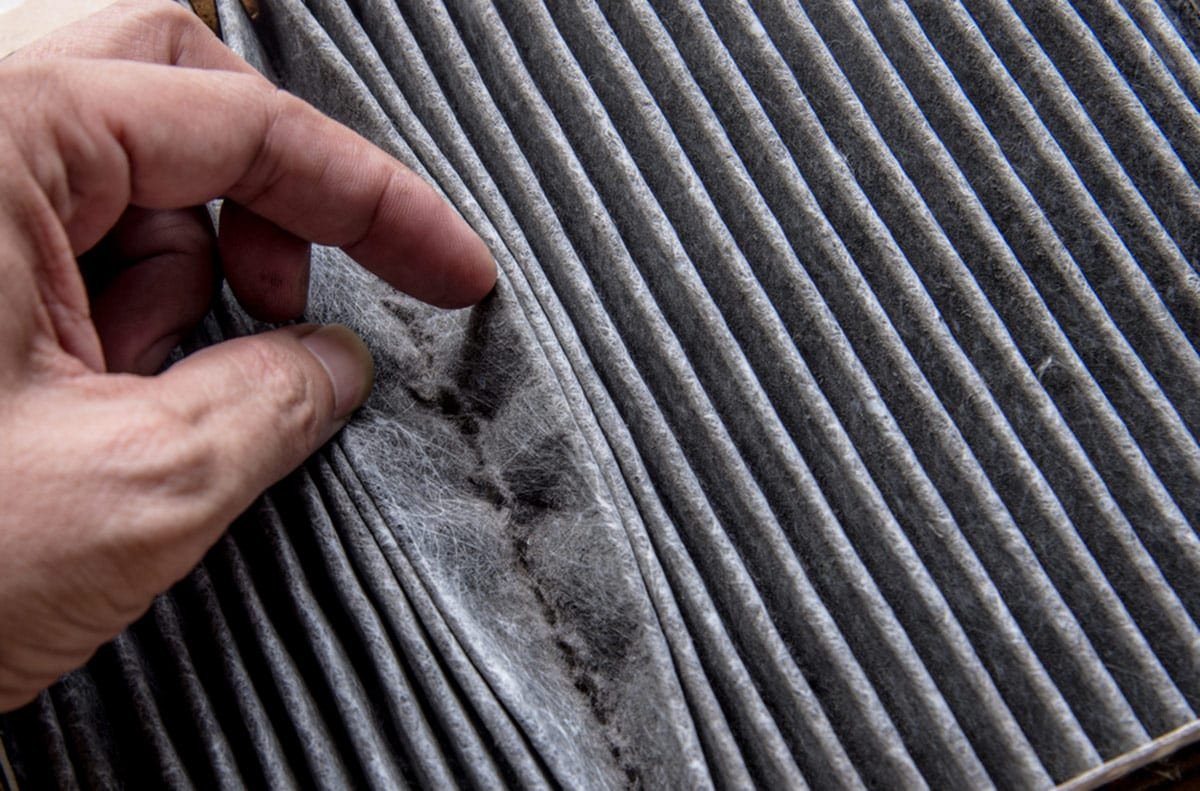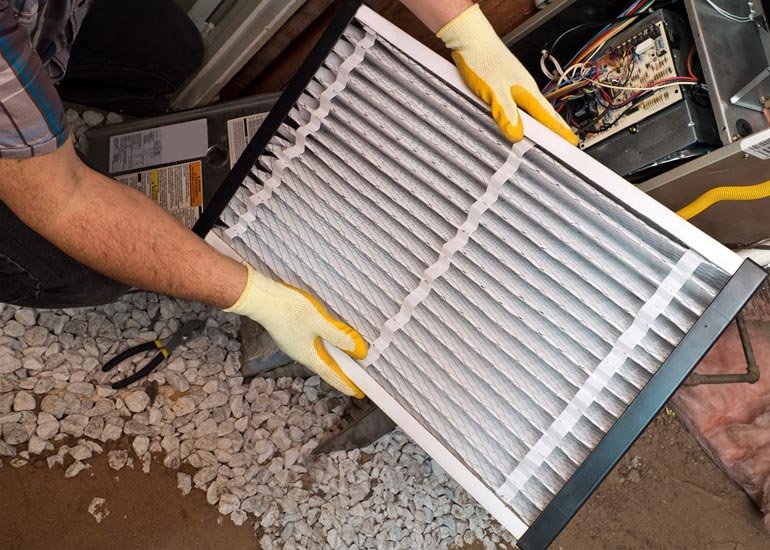How does an air-source heat pump work? has a reversible function. Using a vapour-compression refrigeration process, they utilize outdoor air as a heat source when running on heating mode. They also can use the outdoor air as a heat sink when running on cooling mode using the same process.
Air-source heat pumps have three cycles:
- Heating – to provide thermal energy
- Cooling – to remove thermal energy
- Defrost – to get rid of frost buildup on outdoor coils
Air-Source Heat Pump Heating Cycle
The heat from the outdoor air is pumped indoors during the heating cycle. The process starts with a liquid refrigerant flowing through the expansion chamber, changing to a low-pressure vapour/fluid mixture. The refrigerant absorbs heat from the outdoor air as it flows into the expansion device, changing it to a low-pressure vapour.
The pass is then forced through a reversing valve into the accumulator, where remedial liquid also collects before the vapour reaches the compressor. The compressor pressurizes the vapour, reducing its volume causing it to heat up.
The hot vapour will then pass through the reversing valve into the indoor coil (condenser), where the heat goes through to the indoor air. The coil is primarily installed in the ductwork, close to the furnace. The process cools the vaporized refrigerant, changing it into a liquid state. The refrigerant moves to the expansion chamber, and the cycle repeats.
The heat pump’s capacity to transfer outdoor heat into the house is subject to prevailing temperatures and conditions outside. As the temperature drops, so does the heat pump’s absorption ability.
That is why a thermal balance point is factored in the installation process to ensure the pump’s heating capacity and the house’s heat loss rate are equal. The air-source pump will generate supplementary heating, which ensures the indoors are comfortable even when the outdoor ambient temperatures are low.
Most air-source heat pumps have a minimum operating temperature, ranging from -15°C to -25°C, for the newer models, below which they cannot deliver any heating. That means you will have to run to a supplemental system to heat your indoors when the outdoor temperatures fall below the minimum operating temperature.
Air-Source Heat Pump — The Cooling Cycle

Air-source heat pumps will reserve the process described above to cool a building. That means it will be drawing the heat from the indoor air and pumping it outside.
The liquid refrigerant changes to a low-pressure vapour/fluid mixture as it passes through the expansion device during the heating cycle. It flows to the indoor coil (an evaporator), where it absorbs heat from the indoor air, causing it to heat up and change into a low-temperature vapour.
The vapour goes through a reversing valve into the accumulator, where remedial liquid also collects before reaching the compressor. The compressor pressurizes the vapour, reducing its volume causing it to heat up.
The hot gas will then pass through the reversing valve to the condenser (the outdoor coil), from which the heat moves to the outdoor air. The process causes the refrigerant to condense back into a liquid before returning to the expansion device for the cycle to repeat.
In the cooling cycle, the pump dehumidifies the indoor air. Air moisture will condense on the indoor coil’s surfaces as the drawn air passes. A pan placed beneath the coil collects the resulting liquid (water). The pan connects to a condensate drain that directs the water to the house drain.
Air-Source Heat Pump — The Defrost Cycle
When the outdoor temperature is near or below freezing, moisture in the air condenses and freezes over the outside coil as it passes over when the heat pump is running on heating mode. Frost will buildup on the coil depending on the air moisture level and outdoor temperature.
The increased frost reduces the coil’s efficiency to transfer heat to the refrigerant. That means the heat pump will switch to defrost mode to eliminate the frost before going to the heating mode. The process starts with the reversing valve switching the unit to cooling mode.
The pump will send hot gas to the outdoor coil, melting the frost, and this process happens with the outdoor fan that blows cold air over the coil shut off to optimize the heating required to melt the frost. The system will also cool the air in the ductwork, which usually is warmed when the pump is on a heating cycle.
Your air-source heat pump can go into defrost mode based on any of these two:
i). Demand-frost regulator monitors air or coil temperatures, refrigerant pressure, airflow, pressure differential on the outdoor coil to detect frost buildup.
ii). Temperature-timed defrosting starts and ends depending on the pre-set temperature sensor on the outside coil or an interval timer. Depending on the system’s design and prevailing weather conditions, you can set the timed cycle to run every 30 minutes, hour, or 90 minutes.
Running needless defrost cycles lowers the heat pump’s performance. Hence, the on-demand defrost method is ideal to ensure your unit works optimally, and it also reduces your monthly energy bill.
Supplementary Heat Sources
With most air-source heat pumps having a minimum operating temperature, it is wise to consider investing in a supplemental heating source if you reside in a region with frigid conditions. The auxiliary heating source can also prove to be handy when your air-source heat pump is defrosting. Supplementary heat sources available include:
A). All Electric: This configuration supplements the heat pump’s operations using electric resistance elements in the electric baseboards or the ductwork. However, the resistance elements are less efficient depending on the outside temperature.
B). Hybrid Systems: It is an option worth considering when doing a new installation or adding a heat pump to an existing heating system, like replacing your central air-conditioner with a heat pump. The hybrid system often is a supplemental heat source like a boiler or furnace paired with the heat pump.









